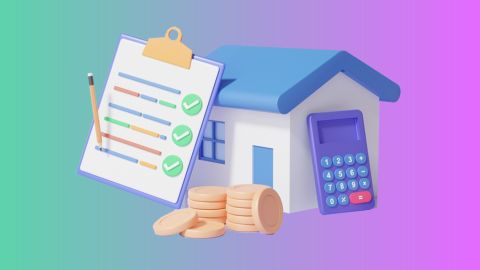If you are planning to leverage your property for financial needs, Bajaj Finance offers Loan Against Property at attractive rates with minimal paperwork and easy eligibility criteria. Understanding terms like plinth area can help you better assess the value of your property and determine the loan amount you can avail of.
How to Measure Plinth Area in Sq Ft?
Measuring the plinth area in square feet is straightforward if you follow the steps below:- Measure external walls: Begin by measuring the length and breadth of the building's outer walls.
- Add all measurements: Combine the lengths of all sides to get the total perimeter.
- Calculate area: Multiply the length and width to calculate the plinth area. Ensure that the measurements are in feet to keep the area in square feet.
- Consider projections: Include areas covered by external walls, like balconies and corridors, as these are part of the plinth area.
What is Included in Plinth Area Calculation?
The plinth area includes several elements of a building's structure, which are crucial for accurate measurement:- Main building area: All rooms, kitchens, bathrooms, and other usable spaces.
- Internal partitions: Walls that divide rooms within the building.
- Verandahs and balconies: Covered areas, even if partially open.
- Staircases: Both internal and external staircases, including the space underneath.
- Utility areas: Servant rooms, storage spaces, and utility rooms within the building.
What is Not Included in Plinth Area Calculation?
While the plinth area covers many parts of a building, some elements are not included:- Open terraces: Areas exposed directly to the sky.
- Garden spaces: Landscaped or garden areas outside the building.
- Parking areas: Open or covered parking spaces are not counted as part of the building's structure.
- Water tanks: Overhead or underground tanks are not considered in the plinth area.
- Shafts and ducts: Elevator shafts, duct spaces, and similar elements are generally excluded.
Difference Between Plinth Area and Carpet Area
| Aspect | Plinth Area | Carpet Area |
| Definition | Total built-up area including walls and utility areas | Area usable for carpeting or living |
| Includes | All walls, balconies, and staircases | Only the usable floor area inside walls |
| Excludes | Open areas, parking, and garden spaces | Internal and external walls, staircases |
| Usage in loans | Used for calculating property value and loans | Less common in loan calculations |
Importance of Knowing Plinth Area in Real Estate
Knowing the plinth area in sq ft is crucial for several reasons:- Accurate valuation: It helps in determining the accurate value of a property. The higher the plinth area, the higher the value.
- Loan calculations: Financial institutions use the plinth area for loan approvals. The bigger the plinth area, the better the loan-to-value ratio.
- Property purchase: Buyers can make informed decisions by comparing properties based on plinth area measurements.
- Construction costs: Builders and contractors use plinth area calculations to estimate construction costs accurately.




